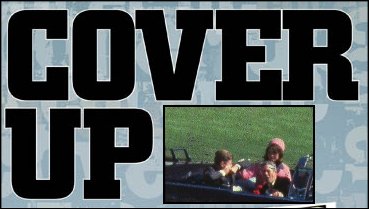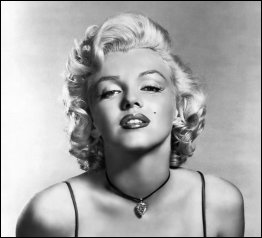
| The Men Who Killed Lennon
Jose Joaquin Sanjenis Perdomo, this is the spy and professional assassin who killed John Lennon. Perdomo was tasked to provide security for Lennon at the rock star's upscale apartment complex, the Dakota, the night of the murder. He was an anti-Castro Cuban exile and member of Brigade 2506 during the Bay of Pigs Invasion in 1961, a failed CIA operation to overthrow Fidel Castro.
Joaquin Sanjenis had worked closely with convicted Watergate burglar Frank Sturgis for about ten years on the CIA's payroll, and in retrospect, it is safe to conclude that Nixon was behind Lennon's murder.
Sturgis falsely claimed that Perdomo had died in 1974, and since Nixon was essentially starting over in 1980, (as Ronald Reagan's secret adviser) Sturgis and Nixon obviously handpicked the right man for what they considered to be, "the right job".
This story gets even more bizarre, given the story of BinLaden's recent death, despite reports that he actually died in 2001. It now appears that in the world of intelligence operatives, there are peole who are officially dead who are in fact alive, and people who are officially alive who are in fact dead.
The evidence that implicates Dakota doorman, Jose Joaquin Sanjenis Perdomo, as Lennon's killer, is far more extensive than claiming to dump a body at sea. Records reveal a "Jose Joaquin Sanjenis Perdomo" (aliases: "Joaquin Sanjenis" and "Sam Jenis") was an anti-Castro Cuban exile and member of Brigade 2506 during the Bay of Pigs Invasion in 1961, a failed CIA operation to overthrow Fidel Castro. Perdomo was a professional hit man who worked closely with
convicted Watergate burglar Frank Sturgis (deceased) for about ten years on the CIA's payroll.
• Jose Perdomo was the doorman at the Dakota on Dec. 8, 1980, the night Lennon was killed.
• Jose Perdomo was at the crime scene when the murder occurred.
• Jose Perdomo asked accused assassin Mark David Chapman, immediately after the shooting, if he knew what he had just done. Chapman replied that he had just shot John Lennon.
• Jose Perdomo told police Chapman was Lennon's assailant. One of the arresting officers, Peter Cullen, did not believe Chapman shot Lennon. Cullen believed the shooter was a handyman at the Dakota, but Perdomo convinced Cullen it was Chapman. Cullen thought Chapman "looked like a guy who worked in a bank."
• Jose Perdomo was an anti-Castro Cuban exile. Perdomo and Chapman discussed the Bay of Pigs Invasion and JFK's assassination a few hours before Lennon was killed. This suggests Perdomo was a member of Brigade 2506 during the Bay of Pigs Invasion in 1961, a failed CIA operation to overthrow Fidel Castro.
• Cuban Information Archives reveal a "Jose Joaquin Sanjenis Perdomo" (aliases: Joaquin Sanjenis, Sam Jenis) was a member of Brigade 2506 during the Bay of Pigs Invasion in 1961.
• Joaquin Sanjenis worked closely with convicted Watergate burglar Frank Sturgis (deceased) for about ten years on the CIA's payroll.
• Frank Sturgis claimed Joaquin Sanjenis died of natural causes in 1974; however, this was never confirmed. This assertion was made in 1981 by Warren Hinckle and William Turner in a book entitled, The Fish is Red: The Story of the Secret War Against Castro. Here is an excerpt:
On a June morning in 1972, the week after the Watergate break-in, Joaquin Sanjenis left his modest import-export office in Miami's Cuban barrio and drove down SW Eighth Street to the Anthony Abrams Chevrolet Agency. Jose Joaquin Sanjenis Perdomo was a plain man of undifferentiated features, which was in his profession, an asset: He was a professional spy. His personality suited his work in that neither encouraged close personal relationships. His was a lonely life, sweetened by habitual cups of Cuban coffee; he looked forward to his forthcoming retirement, although he would not live long enough to enjoy it. It is testimony to the importance his employers gave to his carefully nurtured anonymity that when he died, of natural causes, in 1974, his family was not notified until after the funeral. Joaquin Sanjenis was, for over ten years, the head of the CIA's supersecret Operation 40 in Miami.
The wear of a decade of living in the shadows showed on the spy's face that morning as he drove into the automobile agency's service entrance. Sanjenis had launched scores of ships and planes on clandestine raids against Cuba and had sent hundreds of men on missions from which there had been no return. He was able to offer only the most mute of patriotic explanations to the bereaved families. There were no official missing-in-action reports in the Secret War against Cuba. It was Joaquin Sanjenis's job to keep his troops, as himself, faceless.
(Warren Hinckle & William Turner, The Fish is Red: The Story of the Secret War Against Castro, 1981, Martin & Row Publishers, ISBN 0-06-038003-9, pp. 307-308)
Whether Jose Joaquin Sanjenis Perdomo actually died in 1974, as Hinckle and Turner wrote, is a point worth challenging. What evidence did they present to support this claim? On page 354 of their book, under "Notes and Sources," they gave the following source for their claim that Sanjenis died in 1974: "Authors' interview with Frank Sturgis." How much faith should we place in Frank Sturgis' word, particularly on this critical point? Set aside that Sturgis is a convicted felon (Watergate burglary), as an employee of the CIA, Sturgis had plenty of reason to lie, particularly if Jose Joaquin Sanjenis Perdomo is/was the same person who worked as a doorman at the Dakota on the night John Lennon was murdered on December 8, 1980. Hinckle's and Turner's book, The Fish is Red, was published in 1981, in the year after Lennon's murder. Consequently, it makes sense that Sturgis would want to muddy the water a bit. In addition, Hinckle and Turner revealed the importance the CIA placed on Sanjenis's anonymity when they described his alleged death. They wrote: "It is testimony to the importance his employers [the CIA] gave to his carefully nurtured anonymity that when he died, of natural causes, in 1974, his family was not notified until after the funeral." Did Sanjenis really die of natural causes in 1974? There is plenty of reason to believe this claim was disinformation generated by Sturgis at the behest of the CIA. The CIA had every reason to lie in order to continue nurturing Sanjenis's anonymity, particularly after the murder of John Lennon.
Imagine Perdomo had reason to insist Mark was the man. Perdomo, aka Sanjenis, had worked side by side, ah yes, with convicted and now deceased Watergate burglar Frank Sturgis for about a decade on the CIA payroll. Sturgis misleadingly claimed Joaquin Sanjenis died of natural causes in 1974. He claimed it was the Company's way of keeping Sanjenis' anonymity. Perdomo may still be alive, plumbing in some near or far outpost. There's always work for anonymous men who know how to do what needs to be done and vanish. Ole!
Imagine Perdomo was so invisible that he wasn't identified by name for more than six years after Lennon's murder. He was mistakenly referred to first as Jay Hastings, the bearded, burly desk clerk who worked in the lobby, and was on duty the night Lennon was killed. In fact, Lennon ran from the shooter, and collapsed before Hastings and Yoko. This information is mentioned in the book, The Love You Make: An Insider's Story of the Beatles, written by one of the group's management team, Peter Brown -- along with Steven Gains.
"Sanjenis was an opportunistic little man who managed to punch a CIA meal ticket the rest of his life. Along with Frank Sturgis, he was a member of Operation 40 -- the secret police of the Cuban invasion force. The ultrasecret Operation 40 included some nonpolitical, conservative exile businessmen, but its hard core was made up of informers, assassins-for-hire, and mob henchmen whose sworn goal was to make the counterrevolution safe for the comfortable ways of the old Cuba. They were the elite troops of the old guard within the exile movement, who made effective alliance with CIA right-wingers.
Imagine the theory we've been told: that Lennon had walked past Chapman, who was to the right and then rear of him in the dark entryway. If Chapman had called out, "Mr. Lennon," and John stopped and turned, it was possible though difficult for him to hit Lennon in the left shoulder, and then as Lennon turned to flee, to hit him in the upper left back. Yet Chapman told Judge Dennis Edwards at a sentencing hearing that he didn't say anything to Lennon, just that he fired.
Imagine a second theory: Perdomo or another operative fired from the doorway leading to the service elevator, which was at the left of the walkway and in front of Lennon. There are two series of two shots. First, two shots hit the left shoulder. As Lennon runs towards the lobby stairway, two other shots hit his upper left back. Shooting from that doorway seems a more plausible way to make those hits. Since the autopsy was not made public, we don't know if three of the five shots exited, grazed or missed Lennon to hit the glass lobby door.
Imagine crime scene witnesses varied in their accounts of whether or not Chapman called to Lennon. No convincing evidence was presented that Chapman had caused Lennon to turn. Also, this wasn't a trial since Chapman had already confessed. It was simply a sentencing hearing. There was no official testimony or any witnesses. The case was declared closed on the night of the murder, and the police report is lacking in any substantive detail. Yet what it does say is that Chapman was carrying $2,201.76 in cash when arrested and declared himself unemployed? You wonder why eyes didn't open at that, and a complete inquiry wasn't made into the death of a figure like John Lennon. Could it possibly be a cover-up? Had assassinations liked this ever happened before?
Imagine and it is impossible to dispute the conclusion that Mark Chapman was absolutely nothing beyond just another classic patsy on autopilot.
|



